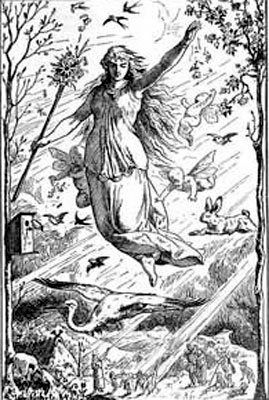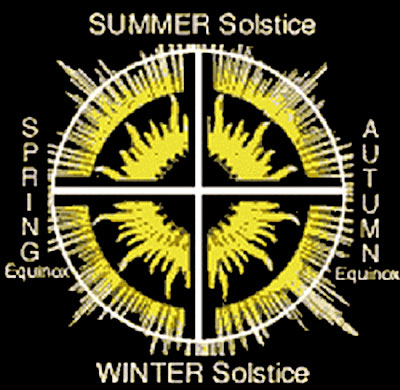|
by Acharya S
excerpted from "Suns of God -
Krishna, Buddha and Christ Unveiled"
Contrary to popular belief, Easter does not represent the "historical" crucifixion and resurrection of Jesus Christ.
In reality, the gospel tale reflects the
annual "crossification" of the sun through the vernal equinox
(Spring), at which time the sun is "resurrected," as the day begins
to become longer than the night.
The "Pagan" Easter is also the Passover, and Jesus Christ represents not only the sun but also the Passover Lamb ritually sacrificed every year by a number of cultures, including the Egyptians, possibly as early as 4,000 years ago and continuing to this day in some places.
Easter Around the
World
The March dates were later applied to the 'Passion and Resurrection' of Christ:
This "coincidence" between the
deaths
and resurrections of Christ and the older Attis was not lost on
early Christians, whom it distressed and caused to use the "devil
got there first" excuse for the motif's presence in pre-Christian
paganism.
As Frazer states:
The salvific death and resurrection at Easter of the god, the initiation as remover of sin, and the notion of becoming "born again," are all ages-old Pagan motifs or mysteries rehashed in the later Christianity.
The all-important death-and-resurrection motif is exemplified in the "Parisian magical papyrus," a Pagan text ostensibly unaffected by Christianity:
Easter's Roving Date is Astrotheological
In the gospel tale, there are two dates for the crucifixion: the 14th and the 15th of the month of Nisan, and within Christianity the date for Easter was debated for centuries.
There continue to be two dates for Easter: the Western Catholic and Eastern Orthodox, thus demonstrating that this holiday is not the historical date of the actual crucifixion of a particular man.
The dates are, in fact,
astronomical, astrological and astrotheological.
In explaining this roving date, one "distinguished churchman," as Catholic Church historian Eusebius called him, Anatolius, revealed the meaning of Easter and of Christ, as well as the fact that astrology was a known and respected science used in Christianity.
Said Anatolius:
In establishing the "Paschal festival,"
Church father Anatolius thus based his calculations on the positions
of the sun and moon during the vernal equinox.
Christ as the Solar Hero
The need to time the Easter celebration - or resurrection - to coincide with the vernal equinox demonstrates that "Christ" is not an historical personage but the sun.
This fact of Easter being the
resurrection of the Sun has been well known for centuries, just as
"the Savior's" birth at the winter solstice has been recognized as
another solar motif. Another obvious clue as to Christ's nature is
the fact that the "Lord's Day" is Sunday. "Christ is the Sun of Righteousness, with 'divine beams.'"
Christ is thus the Sun of Righteousness,
with "divine beams."
The Paschal Chronicle
The Easter calculations were recomputed in the seventh century by the Christian author(s) of the Paschal Chronicle or Alexandria Chronicle, which seeks to establish a Christian chronology from "creation" to the year 628.
The Paschal Chronicle determines the proper date for Easter as March 21st and the date of Christ's resurrection as March 25th (or, midnight, March 24, three days after the beginning of the equinox).
In his various calculations, the Chronicle author discusses solar and lunar cycles, including the 19-year lunar cycle, by which he reckons the crucifixion and resurrection, concluding:
To wit, Christ's death and resurrection
are based on
astrotheology.
March 10, 2007 from YouTube Website
|


